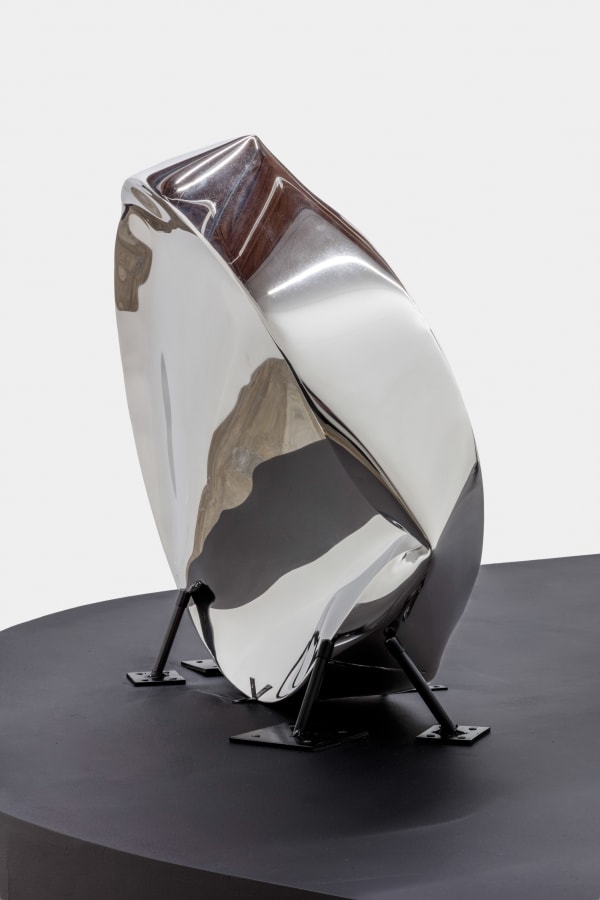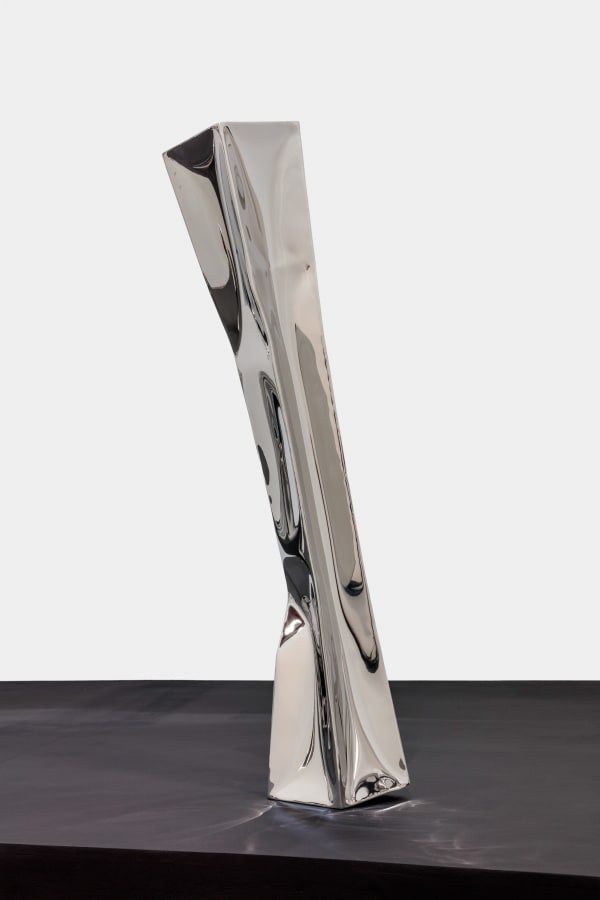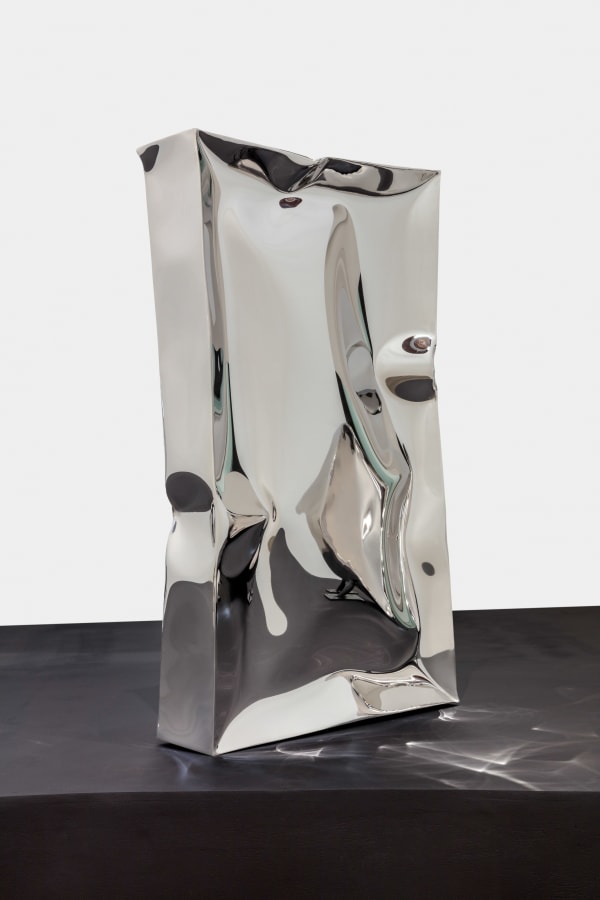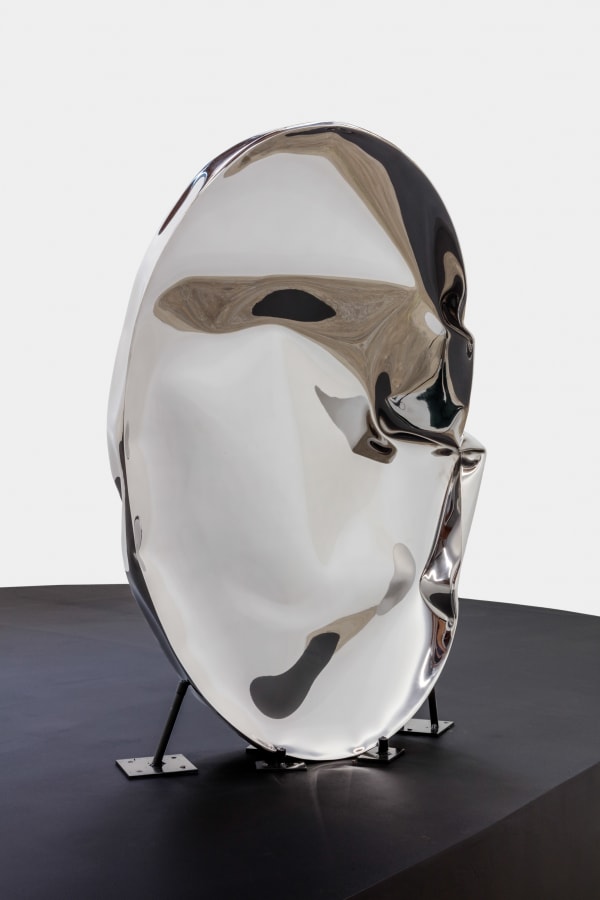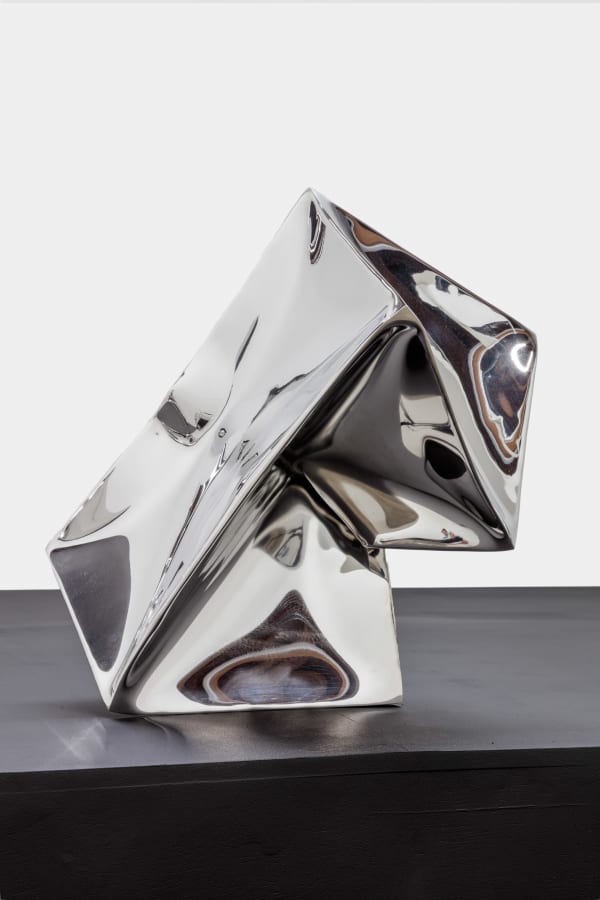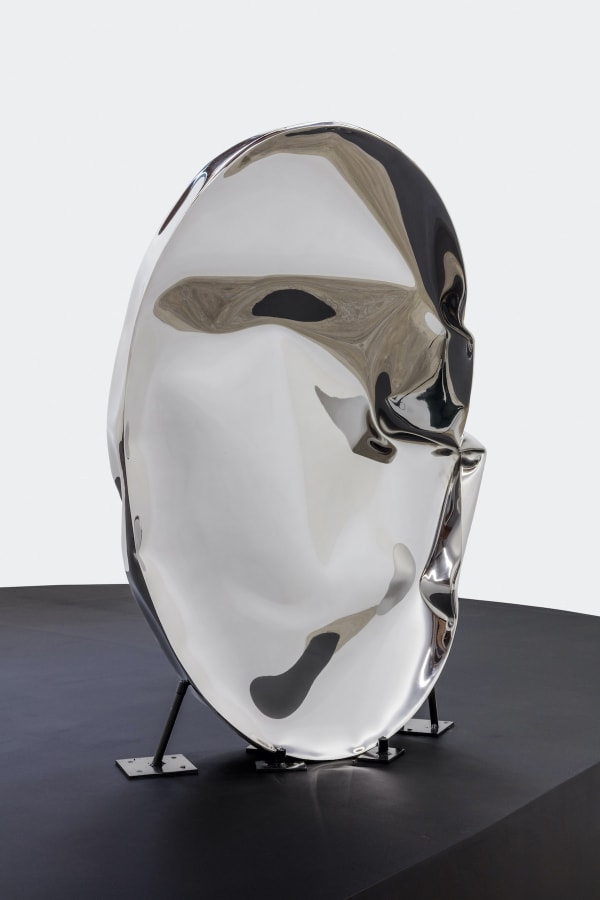Adam Tylicki: 20 Atmospheres
-
 Adam Tylicki36°54.79'N • 7°48.79'W no. 7, 2022Stainless steel
Adam Tylicki36°54.79'N • 7°48.79'W no. 7, 2022Stainless steel -
 Adam Tylicki36°54.79'N • 7°48.79'W no. 3, 2022Stainless steel
Adam Tylicki36°54.79'N • 7°48.79'W no. 3, 2022Stainless steel -
 Adam Tylicki36°54.79'N • 7°48.79'W no. 1, 2022Stainless steel
Adam Tylicki36°54.79'N • 7°48.79'W no. 1, 2022Stainless steel -
 Adam Tylicki36°54.79'N • 7°48.79'W no. 5, 2022Stainless steel
Adam Tylicki36°54.79'N • 7°48.79'W no. 5, 2022Stainless steel -
 Adam Tylicki36°54.79'N • 7°48.79'W no. 4, 2022Stainless steel
Adam Tylicki36°54.79'N • 7°48.79'W no. 4, 2022Stainless steel -
 Adam Tylicki36°54.79'N • 7°48.79'W no. 2, 2022Stainless steel
Adam Tylicki36°54.79'N • 7°48.79'W no. 2, 2022Stainless steel
[ entropy intensifies ]
Performance and Process in Adam Tylicki’s work.
Adam Tylicki flirts with unreality for his new installation at Baert Gallery. 20 Atmospheres is the (by)product of a journey that Tylicki began to undertake many years ago — when the idea came to him to manufacture sculptures designed to collapse under water.
After various attempts at realizing his vision, Tylicki finally launched his polished sculptures overboard, sending them to the bottom of the Atlantic. During their twenty minute journey, the pieces gradually collapse under the weight of many atmospheres. These stainless steel sculptures — that Tylicki refers to as “shapes“ — are contained inside cages doubling as camera rigs used to document their transformation from polished geometric primaries into shiny crumpled metal.
The reflections they exhibit as they distort, cast the objects into the “uncanny valley” — the moment when an computer generated image makes the viewer uneasy, questioning their senses. Is this real? Or do my eyes deceive me? This quasi-realism is the requirement for CGI effects in mainstream film, the digital material must pass a perceptive Turing test: appear real under the standards of photorealism or otherwise be discarded as unreal i.e. bad. Tylicki’s images perform the reverse: he stages very physical processes, that we have no frame of reference for, and hence can only interpret as unreal - that is synthetic.
And yet, Tylicki’s immersive effects required many, very practical considerations. Out of necessity, he taught himself how to weld in order to fabricate the cage-like rig that serves as a diving bell for the buoyant bodies. Great care went into sealing the objects so that they may keep the water out until they inevitably fold in on themselves and eventually burst at the seams, letting the water in. In an era when machine learning (so-called AI) produces synthetic imagery faster than any art director could keep up with, Tylicki designs decidedly slow and labour intensive physical processes, that finally touch upon the digital sublime.
In the show’s central, cinema-scale video, we are invited watch as the trapped sculptures descend (later ascend) from boat to ocean floor, eagerly awaiting their transformation, in turn terrified by sudden, irreversible changes, or delighted by slow, pressure-induced distortions. The caged sculptures eventually make their dramatic landing on the pristine ocean floor — like probes landing in a alien world. Some of them bounce, like unstable anchors, others peacefully showcase their arrival with graceful billows of sand — until they are hoisted up from darkness and back into daylight.
The sculptures short dramatic journey appears to mainly serve the purpose to document their own transformation, the video narrates nothing more than the “shapes” own hypnotic descent into the abyss, an image of a camera filming itself, distorting it’s own reflection. The sculptures are retrieved before the flora and fauna could be tempted to interact with them and before a team of scuba divers looking for the wreckages of ship could happen upon them. Neither nascent corral reef or ancient treasure the pieces get hoisted back up definitionally unchanged, only having buckled under the load of hydrostatic pressure.
Long before the project’s inception, Tylicki lived on a boat which he had sailed from London to North Africa and back, un-moored. What started a cheap way to live as a art and photography student became a seven-year journey. As he mentioned, throwing a storm drogue, a parachute like-anchor can help a boat stay its course in a storm so that the waves will not hit the ship’s hull on its side. Indeed, back on the surface, the submerged objects have a navigational effect, on the boat and it’s driver — they serve as hybrid between anchor and drogue. Perhaps this is what Tylicki’s process hints at, the pure pursuit of the work as an existential balast, the rudder to steer one through unpredictable tides.
In their physical incarnation, the works refuse the two maritime definitions, that of flotsam — the remains of a ship which are the property of the ship owner and jetsam, — anything intentionally hoisted over board and claimable by anyone who mayhappens upon it. The sculptures are simply present — testifying to their physical existence. Indeed they must prove themselves to be real, undistorted by the wide angle lens of the camera — like props from a movie. Their presentation validates our interpretation of the image: it is in fact the offspring of the union between camera and object, not of database and neural network. Relief: a human brought this into being.
Tylicki’s scenography showcases another byproduct of the sculptures’Atlantic baptism. Once retrieved, the formerly submerged artifacts now reflect light in curious ways — delivering chaotic golden spirals patterns onto their black island-shaped plinth — an unintended photogenic side-effect to a photographic process.
-Jasmin Blasco. Los Angeles. Feb.2023






